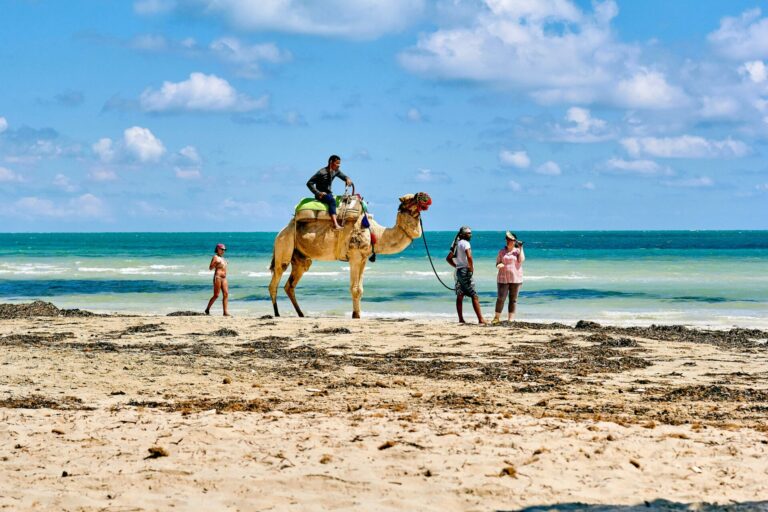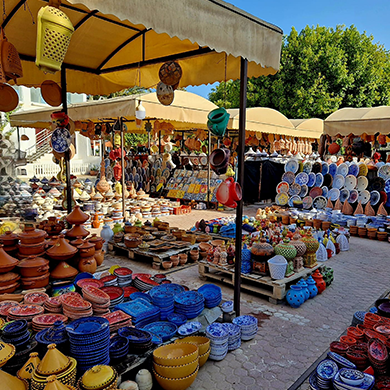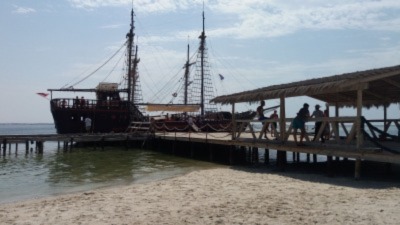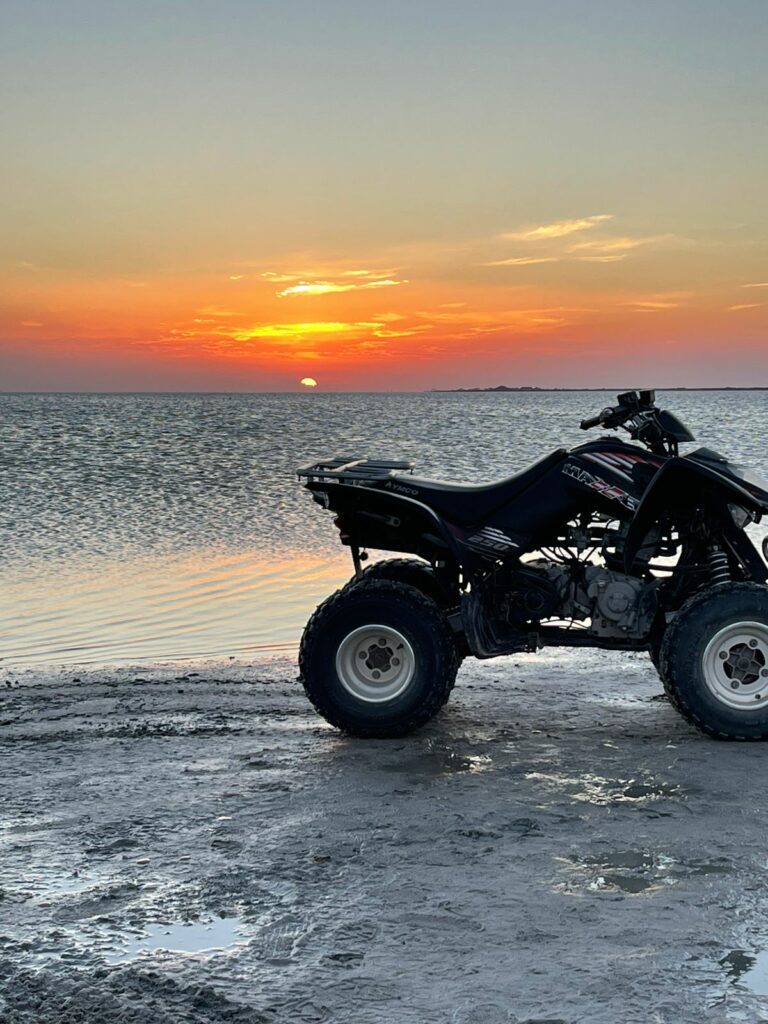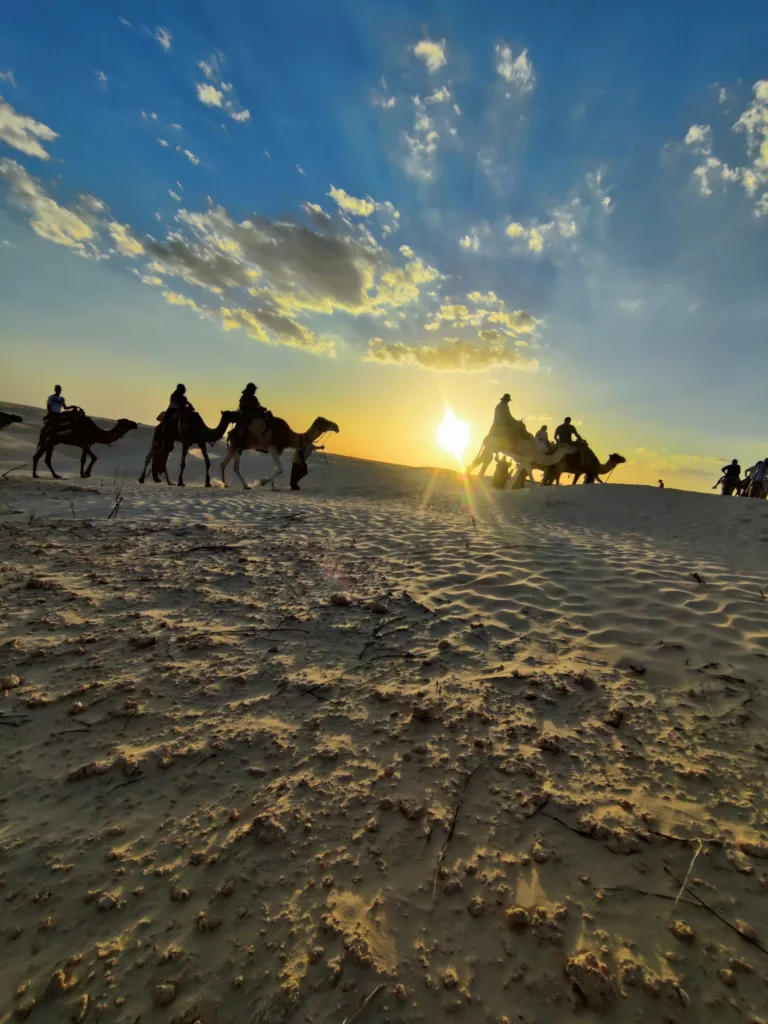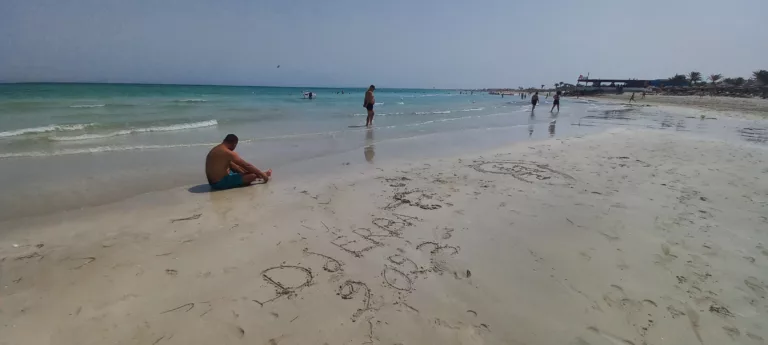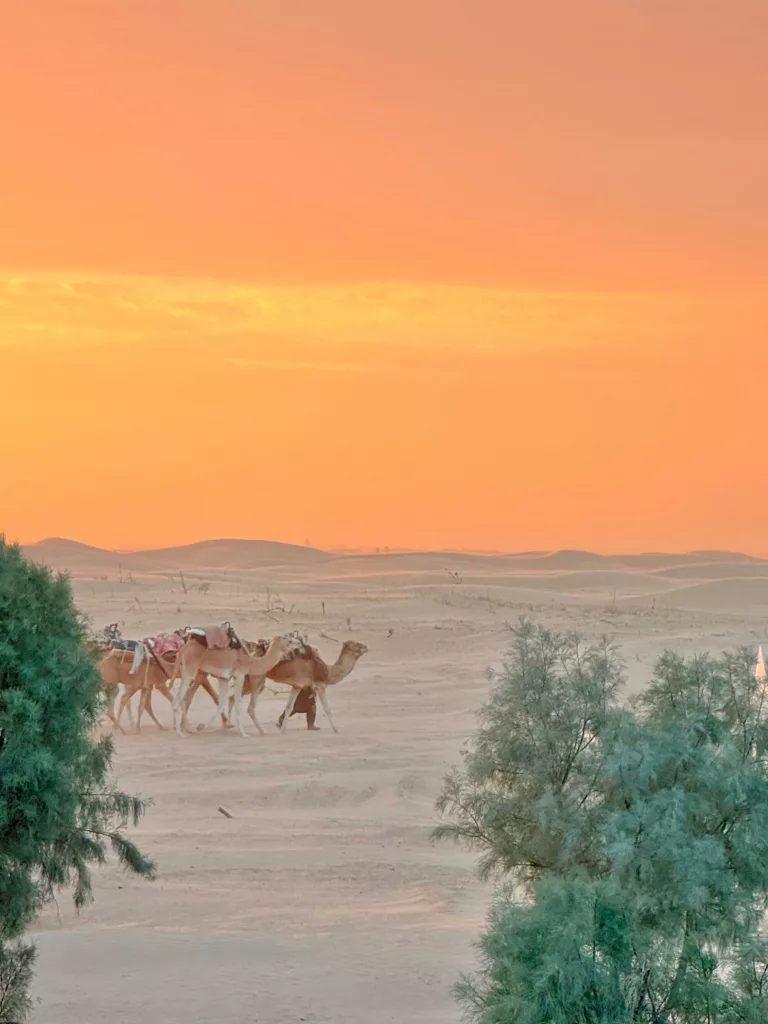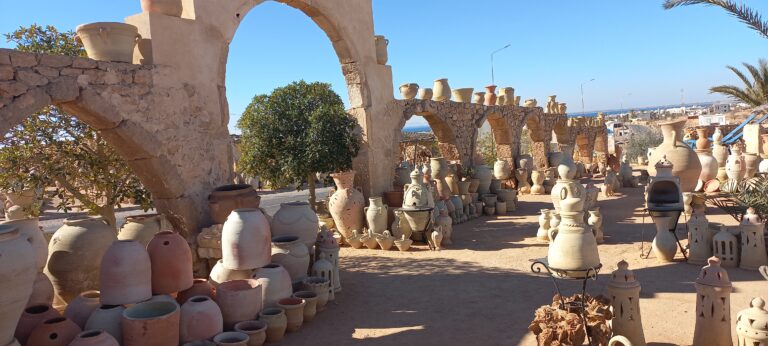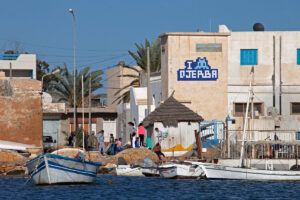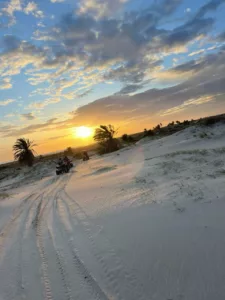Q&A Guide: Discovering Djerba & Tunisia for Travelers
Is there much to do in Djerba?
Djerba , a sun-kissed island off Tunisia’s southeastern coast, is a treasure trove of cultural, historical, and leisure activities. Whether you’re a history buff, beach lover, or adventure seeker, Djerba offers something for everyone.
Is Djerba very touristy?
Djerba strikes a balance between tourist-friendly infrastructure and authentic Tunisian culture . While it’s a popular destination, especially in peak summer (July–August), the island avoids feeling overcrowded thanks to its sprawling landscapes and diverse attractions.
- Resort Areas : Zones like Zone Touristique cater to international visitors with luxury hotels and all-inclusive packages.
- Local Life : Venture beyond resorts to villages like Midoun or Ajim for a taste of daily life, where fishermen mend nets and locals sip mint tea in cafés.
- Off-Peak Travel : Visit in spring (April–June) or autumn (September–October) for fewer crowds and milder weather.
Can you walk around Djerba?
Walking is a delight in Djerba , especially in its charming towns and villages. The island’s flat terrain and compact urban centers make it pedestrian-friendly.
- Houmt Souk : Stroll through narrow alleys lined with whitewashed houses and blue doors, reminiscent of traditional Mediterranean architecture.
- Erriadh : Known for its Djerbahood Street Art Project , this village features vibrant murals by international artists.
- Guellala : A 30-minute walk from Houmt Souk, this pottery hub offers workshops where you can try your hand at the craft.
For longer distances, rent a bike (5–10 TND/day) or scooter (15–20 TND/day). Taxis are also affordable (5–15 TND for short trips).
What is special about Djerba?
Djerba’s uniqueness lies in its cultural diversity , natural beauty , and cinematic fame :
Multicultural Heritage :
- The island is home to Tunisia’s last remaining Jewish community.
- Berber (Amazigh) influences are evident in language, crafts, and festivals like Achoura .
Landscapes :
- Olive Groves : Over 10 million olive trees blanket the island, producing world-renowned olive oil.
- Salt Lakes : The Sebkha ej-Jerbi adds a surreal touch to the scenery.
Star Wars Connection :
- The Mos Espa set near Ajim recreates Luke Skywalker’s hometown. Fans can pose with props and explore the desert backdrop.
How much is a meal for 2 in Tunisia?
Tunisia offers exceptional value for money, even in tourist hotspots. Here’s a breakdown:
Budget Dining :
- Street food: 5–10 TND per person (e.g., brik pastry, grilled kebabs, or lablabi chickpea soup).
- Local cafés: 10–15 TND for a simple couscous or salad.
Mid-Range Restaurants :
- 20–40 TND per person for dishes like chakhchoukha (spicy stew) or grilled fish. A bottle of local wine costs 15–25 TND.
Upscale Dining :
- Resorts and hotels charge 50–100 TND per person for international cuisine (e.g., sushi, steak).
Example : A seafood dinner for two at a mid-range restaurant in Djerba costs 60–80 TND , including drinks.
Is Tunisia expensive for UK tourists?
Tunisia is incredibly affordable for UK travelers , with costs significantly lower than in the UK.
Accommodation :
- Budget hotels: £15–£30/night.
- 4-star resorts: £40–£80/night (often with all-inclusive options).
Food & Drink :
- Street food: £1–£3 per meal.
- Restaurant meals: £5–£10 per person.
Activities :
- El Ghriba Synagogue entry: £2–£3.
- Quad biking tours: £20–£45.
Comparison : A week-long trip for two (flights, accommodation, meals, activities) costs £800–£1,500 , versus £2,000+ for similar European destinations.
Is 10 dinar a good tip in Tunisia?
Tipping in Tunisia is appreciated but not mandatory. A 10 TND tip (≈£2.50) is suitable for:
- Restaurants : 5–10% of the bill (round up to the nearest 5 TND).
- Taxi Drivers : 1–2 TND for short rides; 5–10 TND for longer trips.
- Hotel Staff : 2–5 TND for bellboys or housekeeping.
Avoid overtipping, as wages are low, and small amounts go a long way.
Is Tunisia cheap for a holiday?
Absolutely . Tunisia is one of the most affordable Mediterranean destinations , ideal for budget travelers.
- Sample Budget :
- Flights (UK to Djerba): £150–£250 return.
- 7 nights in a 3-star hotel: £300–£500.
- Food & activities: £200–£300.
- Total : £650–£1,050 for two people.
Money-Saving Tips :
- Eat locally and avoid tourist-centric restaurants.
- Haggle politely in souks (start at 50% of the asking price).
- Travel off-peak for cheaper flights and accommodations.
Can you use British pounds in Tunisia?
While Tunisian dinars (TND) are the official currency, some tourist businesses (hotels, restaurants, shops) accept British pounds or euros. However:
- Exchange Rates : You’ll get better value exchanging GBP to TND at banks or authorized bureaux de change.
- ATMs : Widely available in cities; use Visa/Mastercard to withdraw TND.
- Small Businesses : Rural vendors may only accept cash in TND.
Tip : Carry small denominations (5–20 TND notes) for taxis and tips.
Is Djerba safe?
Djerba is safe , with Tunisia’s tourism industry prioritizing security since the 2015 attacks.
- Safety Measures : Increased police presence in tourist areas and thorough airport checks.
- UK Government Advice : Check the Foreign Office website for updates, but most visits are trouble-free.
- Common-Sense Precautions :
- Avoid displaying valuables.
- Use licensed taxis (agree on fares upfront).
- Stay vigilant in crowded markets.
Where do Brits go in Tunisia?
UK tourists favor destinations combining beaches , culture , and adventure :
- Djerba : For resorts, Star Wars sites, and Jewish heritage.
- Hammamet : Known for its medieval medina and vibrant nightlife.
- Sousse : A coastal city with a UNESCO-listed ribat (fortress).
- Tunis : The capital’s blend of French colonial architecture and Islamic landmarks (e.g., Bardo Museum ).
- Sahara Desert : Multi-day tours to Douz or Tozeur for camel treks and starlit camps.
What is the best month to go to Tunisia?
April–June and September–October are ideal for:
- Weather : Sunny days (20–30°C) and minimal rain.
- Crowds : Fewer tourists compared to peak summer.
- Activities : Perfect for exploring ruins (e.g., Carthage ) or hiking in Ichkeul National Park .
Avoid July–August if you dislike intense heat (40°C+) and crowded beaches.
Is it safe to travel to Tunisia right now?
As of 2023 , Tunisia is safe for tourists . The government has implemented robust security measures, particularly in Djerba, Tunis, and coastal resorts.
- UK Foreign Office : Advises against travel to border regions (e.g., near Libya/Algeria) but deems most areas low-risk.
- Health : No major advisories; standard vaccinations recommended.
What months are hot in Tunisia?
July and August are the hottest, with temperatures soaring to 40–45°C in inland areas. Coastal regions like Djerba average 35°C , moderated by sea breezes.
Winter (December–February) is mild (10–20°C), ideal for cultural tours.
What is the food like in Tunisia?
Tunisian cuisine is a flavorful fusion of Mediterranean , North African , and Ottoman influences .
Must-Try Dishes :
- Couscous : Served with lamb, chickpeas, and harissa (spicy chili paste).
- Brik : Crispy pastry filled with tuna, egg, and parsley.
- Shakshouka : Poached eggs in a tomato-pepper sauce, often breakfast.
- Merguez : Spicy lamb sausage, grilled and served with bread.
Desserts :
- Baklava : Layered pastry with honey and nuts.
- Zlabia : Deep-fried dough soaked in syrup.
Drinks :
- Mint Tea : Served sweetened in ornate glasses.
- Local Wine : Try Château Mornag or Les Oliviers brands.
Do people in Tunisia drink alcohol?
Yes , alcohol is legal and available in Tunisia, though consumption is less common in rural areas due to Islamic norms.
What is the most famous thing in Tunisia?
The Sahara Desert and ancient Roman ruins top the list:
Sahara Desert :
- Star Wars Sets : Matmata’s underground homes and Djerba’s Mos Espa attract fans.
- Desert Safaris : Camel rides, dune bashing, and overnight camping under the stars.
Roman & Islamic Heritage :
- El Djem Amphitheatre : A UNESCO site and one of the world’s largest Roman colosseums.
- Carthage Ruins : Near Tunis, explore the ancient city founded by Phoenicians.
What should I take to Tunisia?
Pack smart for Tunisia’s climate and culture:
Essentials :
- Lightweight clothing (linen/cotton) for summer heat.
- Sunscreen (SPF 50+), sunglasses, and a wide-brimmed hat.
- Comfortable walking shoes for exploring ruins/souks.
Cultural Items :
- Modest attire for visiting religious sites (cover shoulders/knees).
- A French/Arabic phrasebook (though English is spoken in tourist zones).
Practical Gear :
- Adapters (Type E plugs).
- Reusable water bottle and travel first-aid kit.
- Small cash amounts in TND for tips and local transport.
Conclusion : Tunisia, and especially Djerba, offers a rich tapestry of experiences at unbeatable prices. From its sun-drenched beaches and cinematic landscapes to its warm hospitality and flavorful cuisine, it’s a destination that rewards curious travelers. Use this guide to plan your trip—and don’t forget to pack your sense of adventure!
